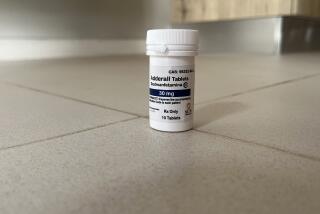How to Get Vaccines, Not Just Viagra
- Share via
Drug manufacturers are in business to make money, not to steward the public health. Without policies to discipline the industry’s excesses and reward it for meeting our needs, we end up with whatever medicine kit boosts the bottom line.
Nothing could illustrate this point better than the spectacle of elderly and sick Americans waiting for hours outside clinics in the hope of receiving a flu shot -- one of the best, most cost- effective health interventions ever devised. Many will be disappointed because there isn’t enough vaccine to go around. Although this year’s shortage, precipitated by the closing of a production facility in England, is the most acute we’ve seen in recent years, it’s not the first.
The problem, we’re told, is that drug makers haven’t invested in updating or expanding production capacity for vaccines. Many have abandoned the vaccine business altogether, leaving only a handful of companies supplying universal childhood vaccines and only two producers of U.S. flu vaccine (including the one whose abrupt shutdown halved this year’s supply). Making vaccines is complicated, the regulatory hurdles high, prices low: In short, there’s not enough profit to entice.
Policymakers respond by trying to sweeten the pot. A Senate bill, for example, would guarantee government purchase of unused doses and offer tax breaks to encourage investment in vaccine production and research.
This approach has been used in other areas where there’s a need but not a lucrative market for a drug. It has taken generous giving by the Bill & Melinda Gates Foundation to revive work on drugs aimed at global killers such as malaria, whose victims are too poor to reward drug companies for curing them. To induce drug makers to develop treatments for rare illnesses in the U.S., the government lays on extra tax credits and monopoly status -- and sick Americans still may have to pay thousands for a dose. Want drug companies to study medicines’ use in kids? That too will cost you extra; for running pediatric studies, companies get patent extensions that can bring in many times what they spend on the trials.
Incentives make sense. After all, only industry has the wherewithal to bring vaccines and important pharmaceuticals from the lab to the local pharmacy. Minimize risk to the companies, the thinking goes, and we just might get the stuff we need.
Still, Americans may be forgiven for emitting a small sigh of exasperation. Isn’t that monthly C-note for arthritis or cholesterol-reducing medicine -- an amount well above the cost of production -- supposed to pay for research? Haven’t we been told that double-digit annual increases in drug spending, the highest drug prices in the world and price hikes substantially outpacing inflation are what subsidize, as the drug industry trade group puts it, “new medicines, new hope”?
If the government is going to provide financial lures to companies to develop vaccines or other badly needed products that don’t yield acceptable profit margins, then we also must question the industry’s claim that every dollar of its famously robust profits earned on more popular drugs underwrites some risky venture in lifesaving. We can limit escalating drug costs that impose sacrifices on us all, and we can do it without shuttering research labs.
Notice, for example, that although flu shots are hard to come by, the chronic-heartburn drug Nexium -- “the healing purple pill” -- pours from doctors’ sample closets and beams into living rooms between segments of our favorite sitcoms. This new drug is virtually identical to the first “purple pill,” Prilosec, which is now off patent and available over the counter. When Americans spend an astonishing $3.1 billion a year on Nexium, the pharmaceutical companies don’t necessarily use the extra profits to fund the most important drug development and research. We could spend $10 billion on Nexium and still not get more flu vaccine. On the contrary, the more we spend on the latest overpriced, oversold, me-too drug, the more we encourage industry to concentrate resources on producing and plugging more of the same.
But once we accept that, as institutions, drug makers are in it for the dough, we can use that knowledge to motivate them in ways that really do serve public health. Financial incentives can be enhanced and honed to ensure they are not simple giveaways, but truly benefit the public. The federal government also could insist on studies that compare the benefits and costs of various drugs that treat the same condition. This information might enable buyers to focus their spending on the best and most important medicines, stimulating price competition and penalizing rather than lavishly rewarding the development of drugs that have only their packaging to recommend them over cheaper alternatives.
We need to dangle the carrot before the private sector in areas where the potential market for a drug is small but the need great. We also might wield the stick in areas where the opposite is true.






